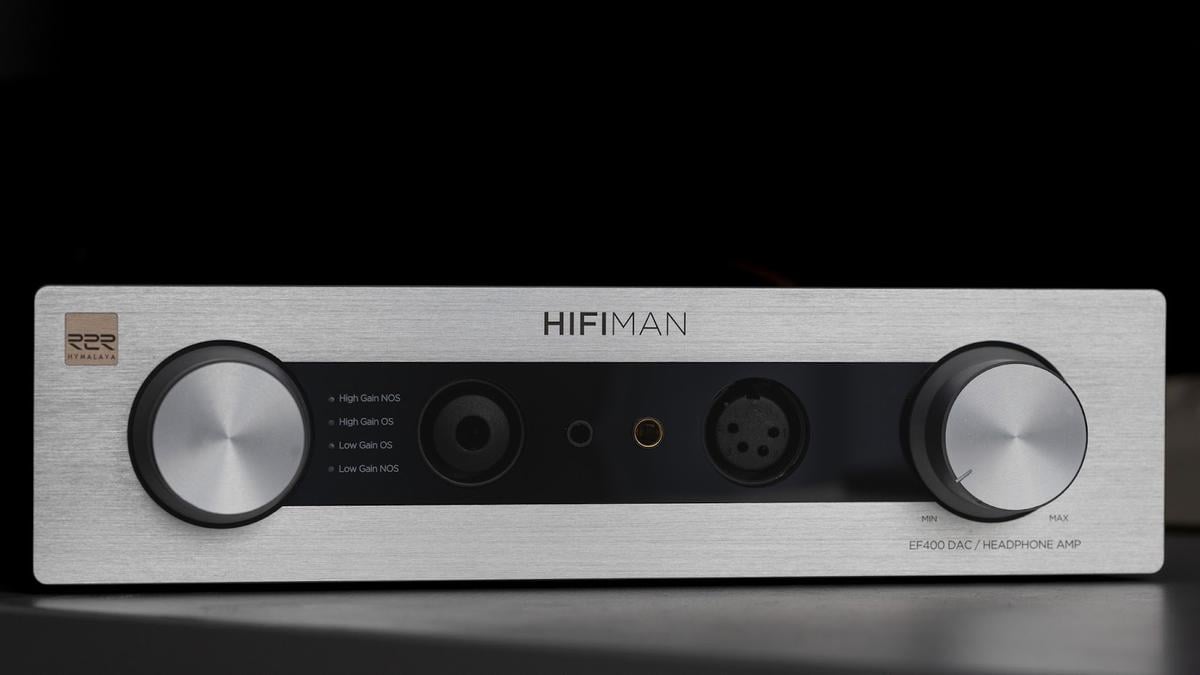HiFiMan’s mid-range DAC/amp offers R2R goodness and tons of power at an affordable price, but is it all too good to be true?
Primarily known for planar magnetic headphones, HiFiMan does release the occasional DAP or DAC/amp. Unfortunately, it’s been a while since HiFiMan refreshed the lineup.
- Solid build
- Easy, driverless setup
- Very high output power
- NOS mode exhibits R2R smoothness in bass and mids
- OS mode provides good macrodynamic punch and slam
- Single-ended output matches well with high-impedance headphones
- Competitively priced
- No DSD support
- No analog or optical input
- Not the best match for low-impedance, high-sensitivity loads
- Not the best imaging or staging
- Sound lacks some nuance in terms of microdynamics and bass texture
- Not the most resolving treble (both NOS and OS mode)
- Needs warm-up time to sound its best
The EF400 aims to change all that. It’s the first mid-priced desktop DAC/amp that HiFiMan has made in years and is marketed as an upgrade to the EF6, which used to cost around USD$1500. The best part is that the EF400 costs less than half the price of its predecessor, making it potentially a great bargain.
So, with tons of power, R2R DAC technology, solid build, and multiple analog outputs at a reasonable price – the EF400 is primed to be a blind buy. Things are rarely so straightforward, and the EF400 is no exception.
Technical Specifications
- Form: Desktop DAC/amp
- DAC Chip: 2 x Hymalaya R2R DAC
- THD+N: 0.002% (Line-out)
- SNR: 118+/-3 dB
- Codec Support: PCM – 32bit/768KHz
- Gain Settings: Low, High
- Reconstruction Filters: 2, Oversampling and Non-oversampling mode
- Outputs: 3.5mm/6.35mm single-ended, XLR/4.4mm balanced, RCA and XLR out
- Output Power: 4.4W at unspecified load (balanced out)
- Controls: Volume knob, mode selector
- Inputs: USB type-C, USB type-A
- Body material: Aluminum, plastic
- Dimensions: 246.5mmmm x 228mm x 61mm
- Weight: 3.08kg
Packaging
The EF400 comes with a basic AC power cord and… nothing else. I would have liked a USB cable at least, but most people have those around nowadays.
The DAC/amp and accessories sit inside a foam cutout to prevent damage during transport. You’ll also notice a warning about selecting the correct voltage before plugging in the amp. More on this later.
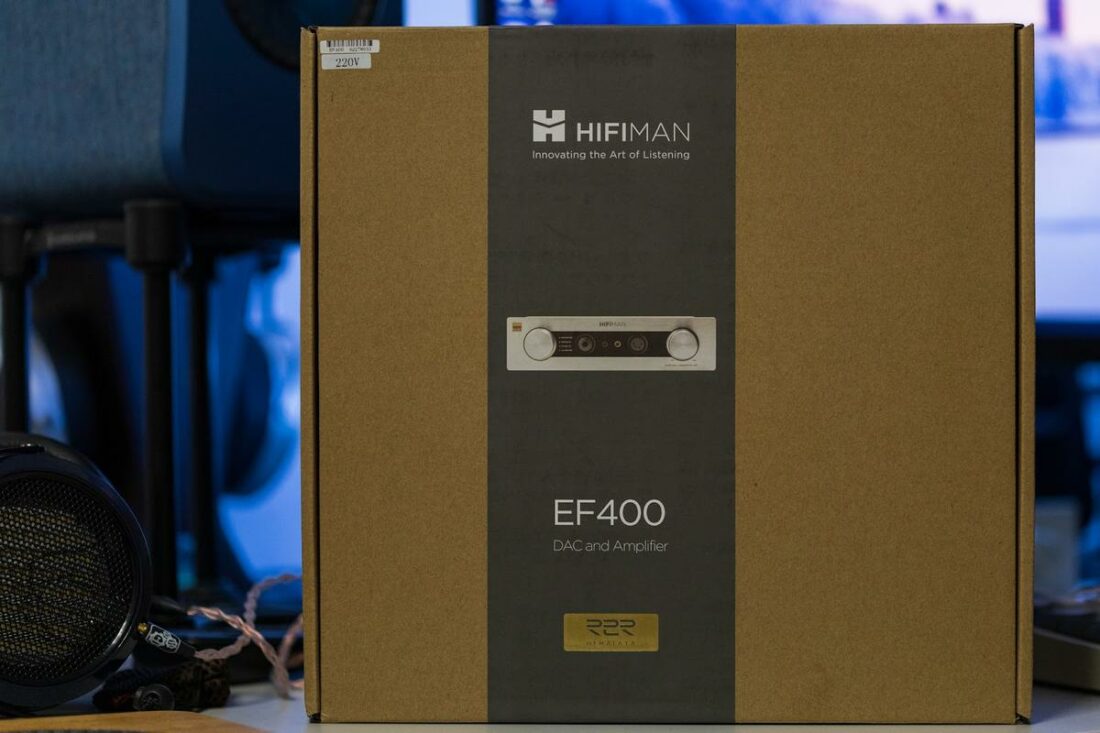
In the box
- HiFiMan EF400 DAC/amp
- AC power cable
Design
The HiFiMan EF400 has an industrial design that can blend into any setup.
The front panel is clean, with the two knobs accentuating the design language somewhat. The four outputs are almost hidden by the black plastic around them, and the R2R logo is the only marketing material on the front.
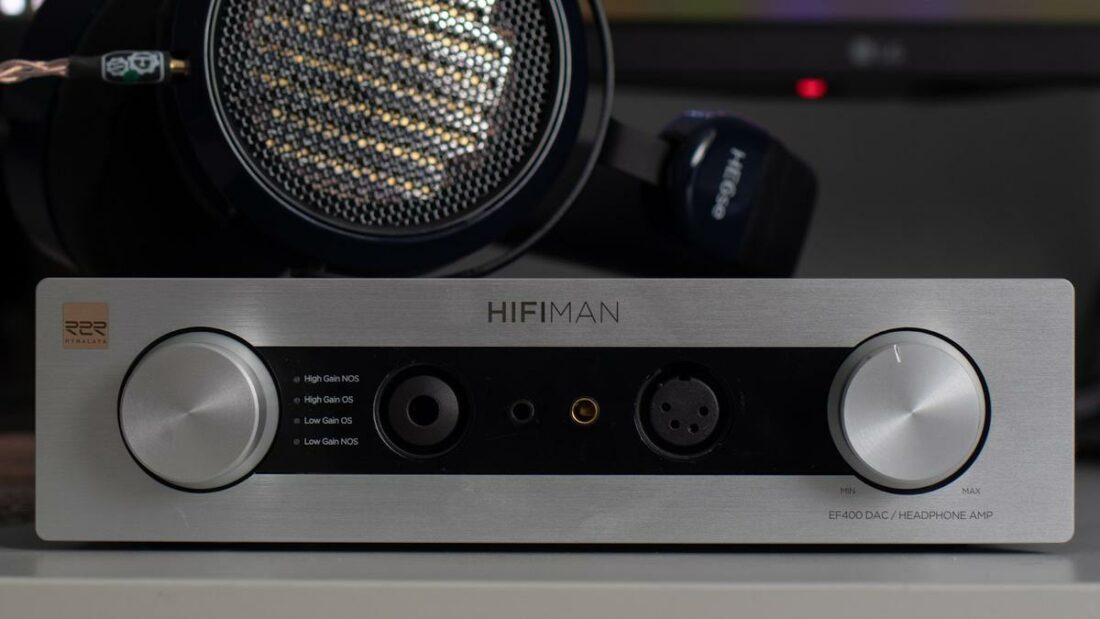
The anodized aluminum shell is fairly thick and feels dense in hand, but the top-center portion has some flex when pushed. The reason is that HiFiMan does not add a supporting bracket in the middle to distribute the pressure. It’s not a big issue, just an observation.
The front panel also has LED indicators for different gain and filter combos. Rotating the left knob cycles through each mode.
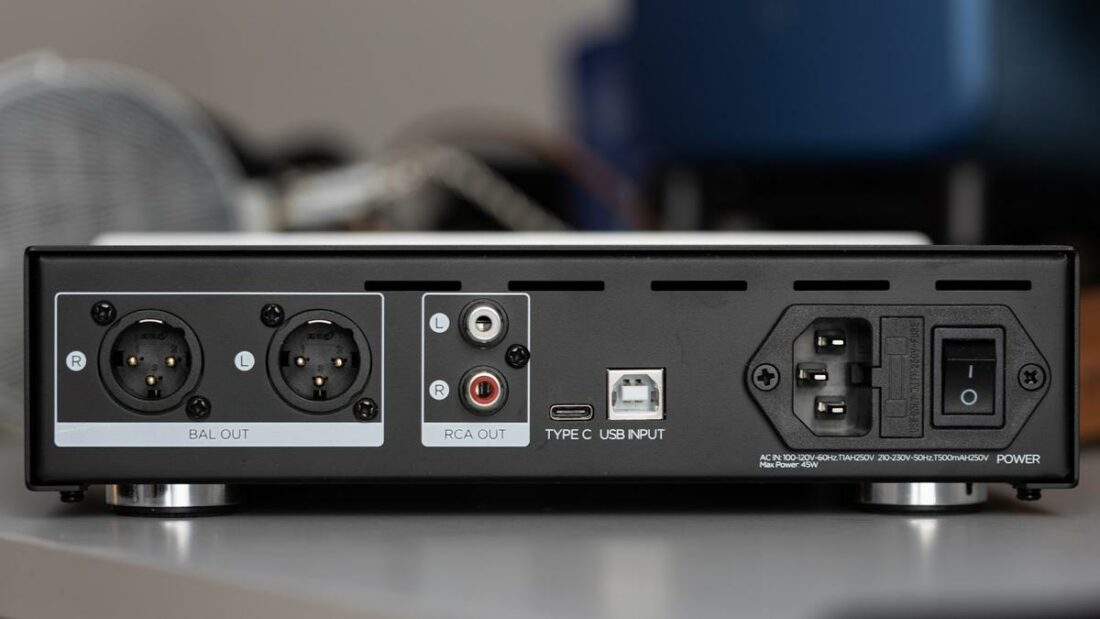
My biggest issue with the EF400’s back panel is the lack of analog inputs and SPDIF/Optical connectors.
As such, you cannot use the EF400 in amp-only mode (which would be pretty interesting, to say the least). SPDIF/Optical connectors would be handy for those who rely on this connector.
The single-ended RCA output and balanced 3-pin XLR outs are expected at this price nowadays. These are always active with fixed voltage, btw, so the front volume pot won’t attenuate the voltage.
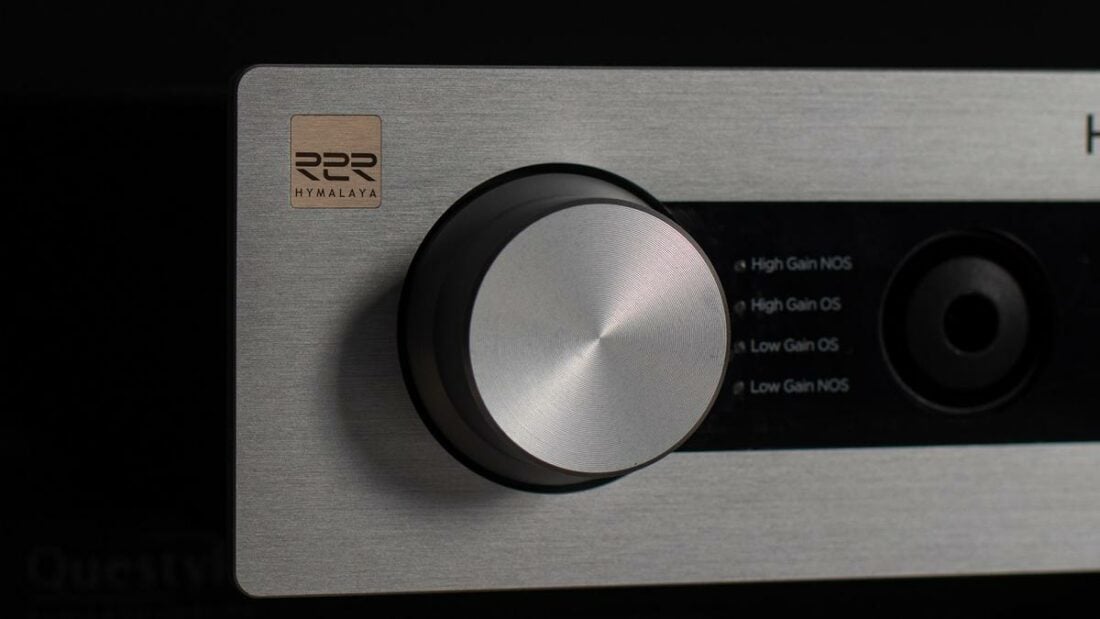
The volume knob is a bit too easy to turn, which makes finer adjustments difficult.
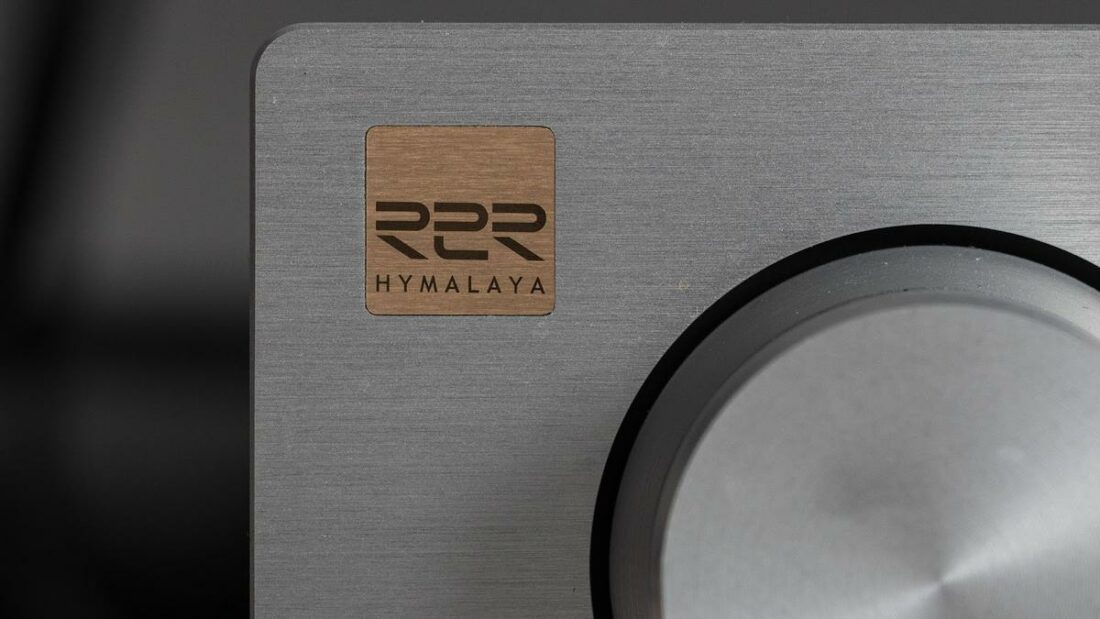
The bottom of the device has the voltage selector mentioned above. It can be a bit confusing, so remember that the number displayed is the currently selected operating voltage. For the US and such, select 115V. For EU countries and others, go for 230V.
{note]Always check the voltage before connecting the DAC/amp to your power outlet.[/note]
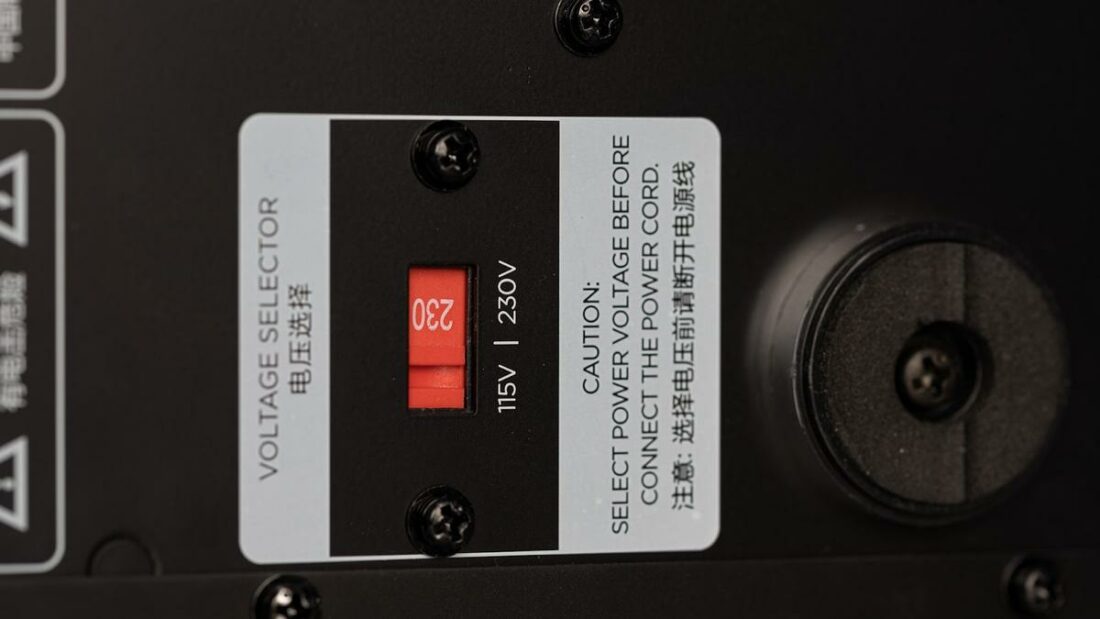
Internals
HiFiMan has spent significant R&D efforts behind its in-house Hymalaya R2R DAC chip. R2R, or “ladder DACs,” are usually very expensive because of a shortage of chips and the need for extra discrete components.
On the EF400, two Hyamalaya R2R chips are in a “dual-mono” configuration, which means that each DAC chip is in charge of one channel (left or right). Opening up the unit shows the layout. HiFiMan has separated the internals into three main parts: the toroidal transformer, the DAC section, and the amp output stage.
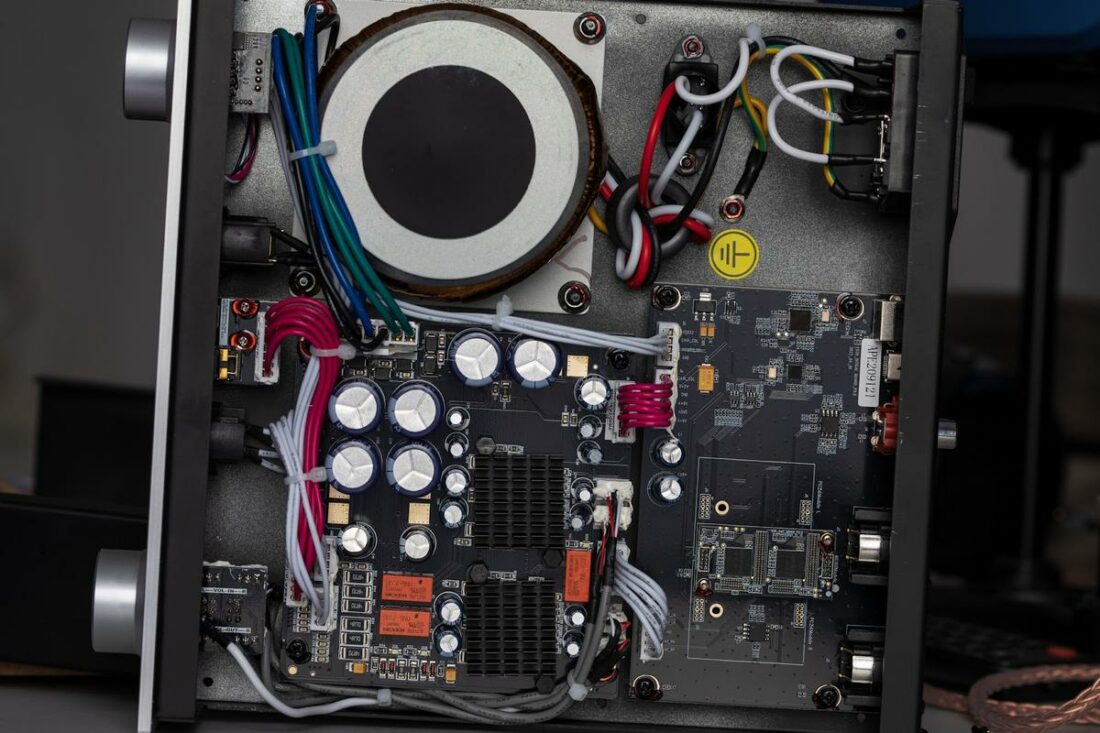
The amp stage draws power from the mainboard, and the voltage attenuation (for low gain) happens directly by the selector on the front. The amp circuitry has heatsinks on top to control the thermals. You can also find the large capacitors in this section that attribute to the high current output.
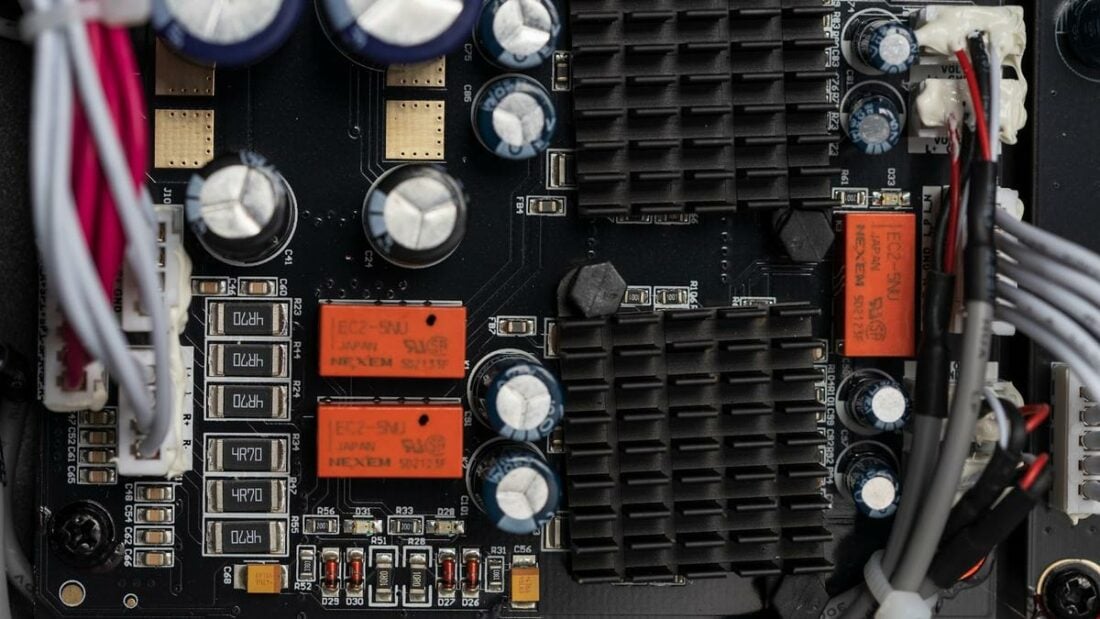
The Hymalaya DAC chip and the USB controller are closer to the back of the device. The USB controller is not the usual XMOS chipset – it seems HiFiMan has picked something else.
Fortunately, setting up the EF400 is a breeze as it’s plug-and-play, though that convenience comes at a cost.
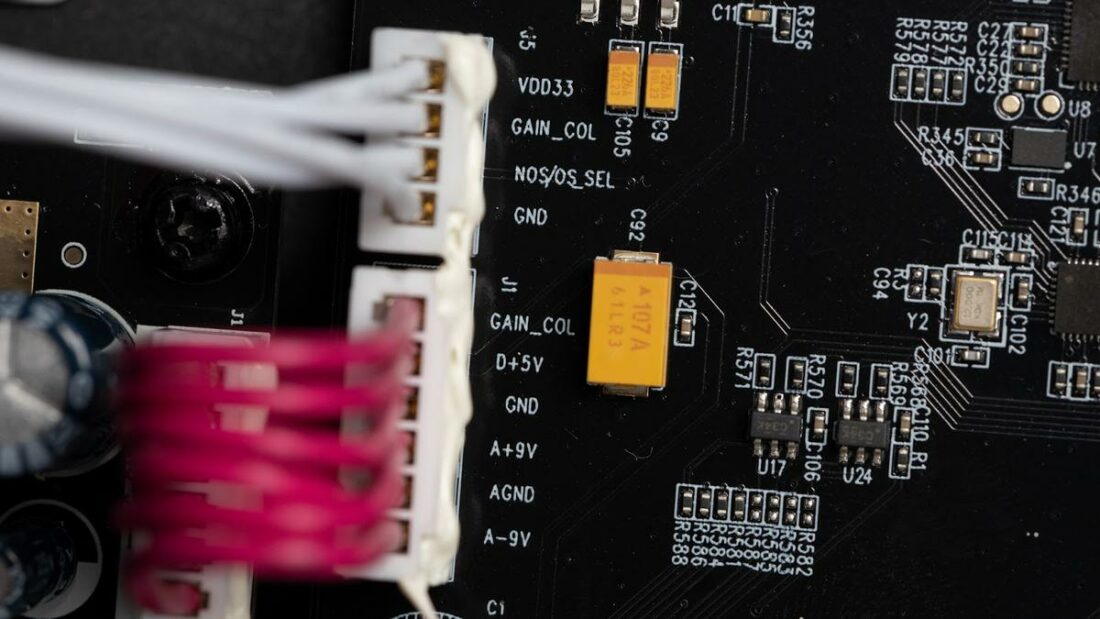
The cost of the driverless setup is the lack of native ASIO support and no DSD playback capability.
MQA playback is also absent, but since that platform is now essentially dead, it doesn’t matter anymore. However, DSD is still a thing, and I have a small collection of DSD masters that sound phenomenal. It’s a shame I cannot play those on the EF400 without routing over PCM.
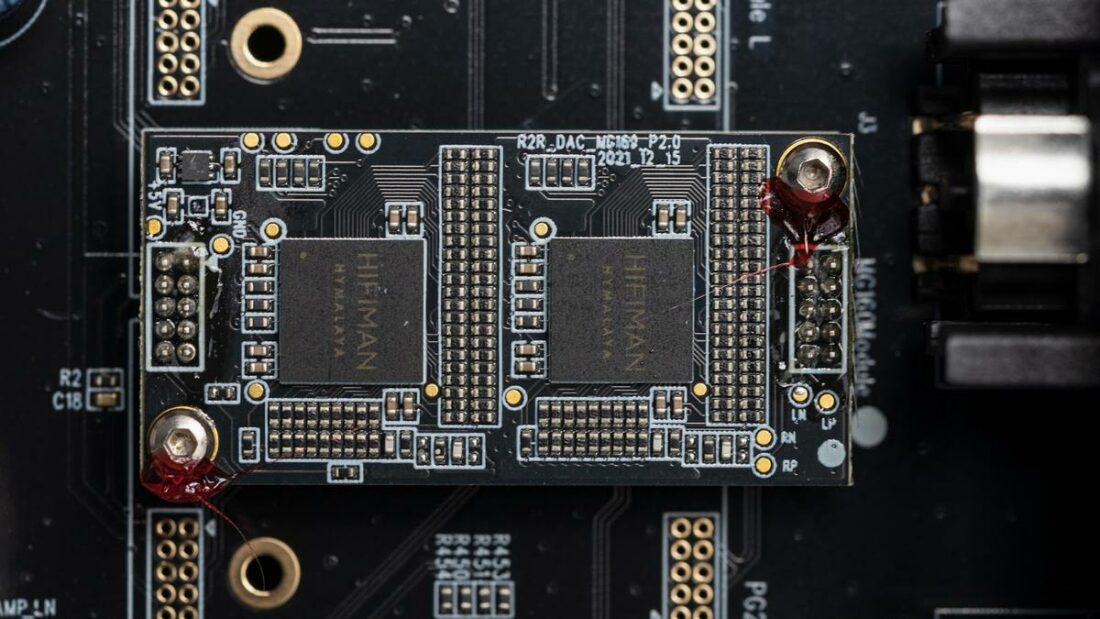
The Hymalaya architecture has few details online. From what I can gather, there are small resistors in the chip, and a custom FPGA controls the entire digital-to-analog conversion process. Both oversampling and non-oversampling modes are supported.
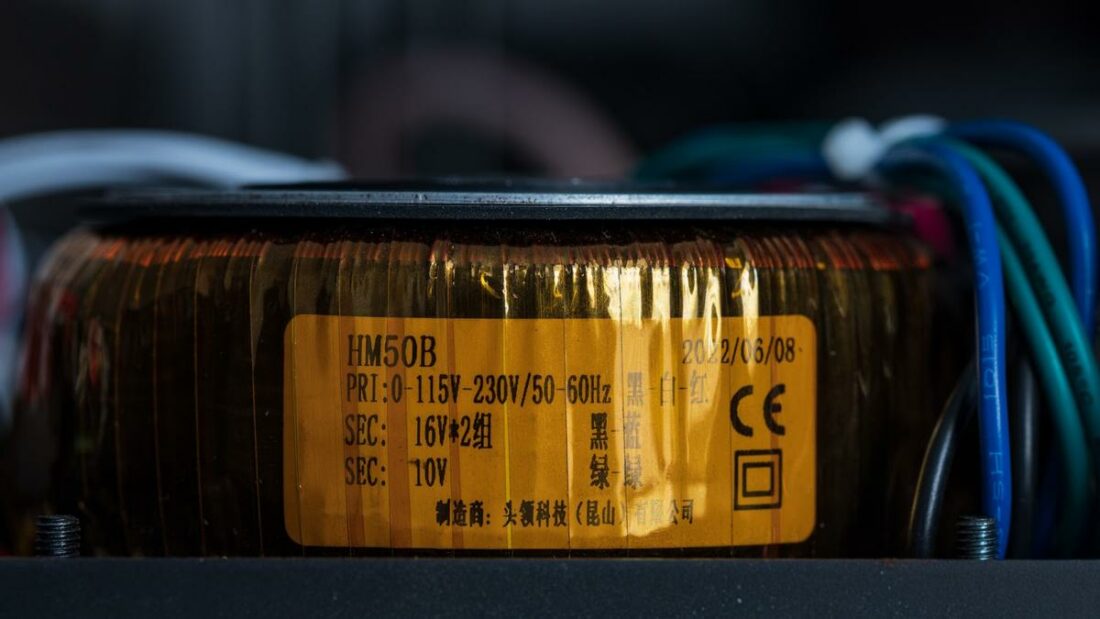
So, overall, the internal layout is not the cleanest around, but it’s reasonably logical, and should something go awry, you can at least take a look inside and fiddle about. Replacement parts for some of the components should also be easy to source.
Kudos to HiFiMan for making the EF400 easy to access and repair.
HiFiMan EF400 Sound
The EF400 does not have a single sound signature. Rather, depending on the mode and output, it can change noticeably.
The reasoning is fairly simple: the OS (oversampling) and NOS (non-oversampling) modes have distinct sound signatures (evident in the measurements). Moreover, the output impedance differs between the single-ended and balanced outputs (with the SE output going as high as 18 ohms).
All of these contribute to the different “flavors” of sound that you get on the EF400, and this change also depends on the headphones you connect.
NOS vs OS mode
The NOS mode generally has a more “rounded” bass. Bass notes do not hit as hard, and the edge seems softened to a degree. The OS mode has harder-hitting slams, and the leading edge of notes seems sharper.
Both modes exhibit an upper-midrange focus, and the NOS mode has somewhat strange behavior in the upper-treble region, which sounds emphasized. As such, certain headphones will not pair well with the EF400.
Moreover, the imaging and staging are not class-leading. Imaging feels slightly hazy, while the staging is better in some competitor DAC/amps. OS mode fares better in this regard, but even then, the EF400 is not the best performer when it comes to spatial cues.
Overall, the EF400 does not sound neutral or “reference.” It has a colored tonality that pairs well with specific headphones and is also a matter of individual taste.
Gremlins
A strange thing I noticed during my evaluation period was the need for some warm-up. Essentially, the EF400 sounds edgy and harsh for the first 20-30 minutes of playback, and after the unit has been turned on for a while, everything sounds more pleasant.
I admit this might be a placebo, but letting the EF400 warm up may lead to a smoother presentation for some. Discrete components require some time to reach the optimal operating temperature, so this might be a design decision rather than my imagination.
Pairing Notes
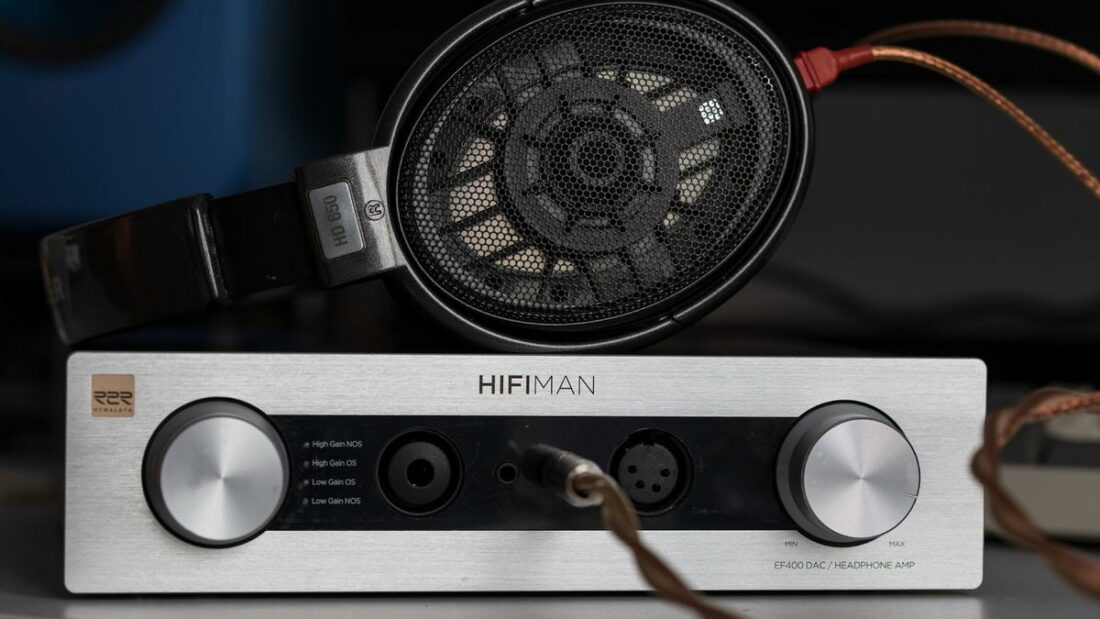
Sennheiser HD650
The HD650 are one of the most popular open-back headphones in the world and have a high-impedance dynamic driver (300 ohms). As such, the high output impedance of the single-ended output leads to a warmer, smoother presentation with these headphones.
I think the EF400 is great at driving the HD650, ending up as one of the few solid-state amps under USD$1000 that I recommend to HD650 or HD600 owners.
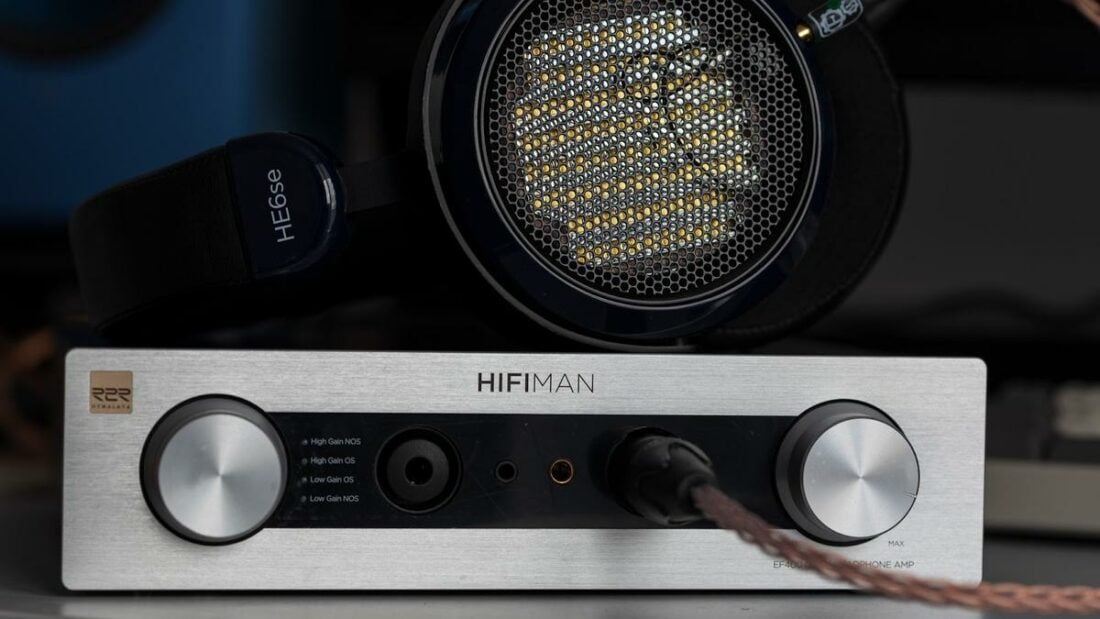
HiFiMan HE6se V2
HiFiMan advertises the “synergy” between the HE-6se V2 (and variants) and the EF400. The EF400 has enough power to get the HE-6se V2 very loud, but I think the pairing is not as “phenomenal,” as stated.
It’s mostly the upper-treble “zing” that gets in the way. The EF400 exaggerates the higher frequencies of the HE-6se, making the presentation less than ideal. The bass slam is also missing, unlike the pairing with certain high-power amps (including speaker amps like Benchmark AHB2).
Then again, the price tag is the saving grace here, and I cannot think of another DAC/amp combo that drives the HE-6se V2 as well as the EF400 does.
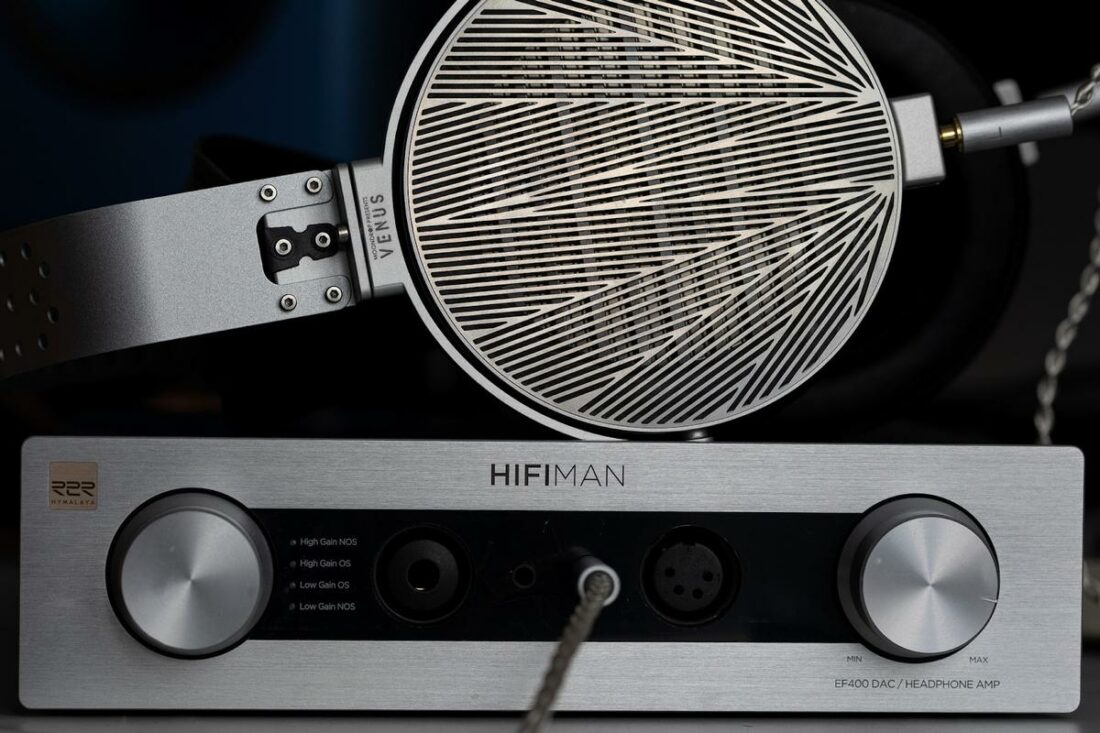
Moondrop Venus
Moondrop’s debut planar magnetic headphones, the Venus, scale well according to source gear. On lesser sources, the mids sound shouty and uninviting, while the bass lacks the nuances that Venus is capable of portraying.
The EF400 shows mixed results with this pairing. The mids and bass are delightfully portrayed, but the treble exhibits the same upper-treble issues I found on the HE-6se V2. The staging is also not as wide as I’d hoped.
Dunu Zen
Dunu Zen are single-dynamic driver IEMs and are very sensitive to background hiss. The EF400 does not exhibit high noise but gets way too loud for the sensitive Zens.
Even at low gain, things get very loud after just a few degrees of rotation on the wheel. Unless you are fine with controlling the volume on the software side (which is not an ideal solution), the EF400 is a no-go for sensitive IEMs.
Comparisons
Questyle CMA-400i
The Questyle CMA-400i is priced higher than the EF400. The design is sleeker and general operation is more streamlined. CMA-400i also has more digital input options, even though it lacks an analog input like the EF400.
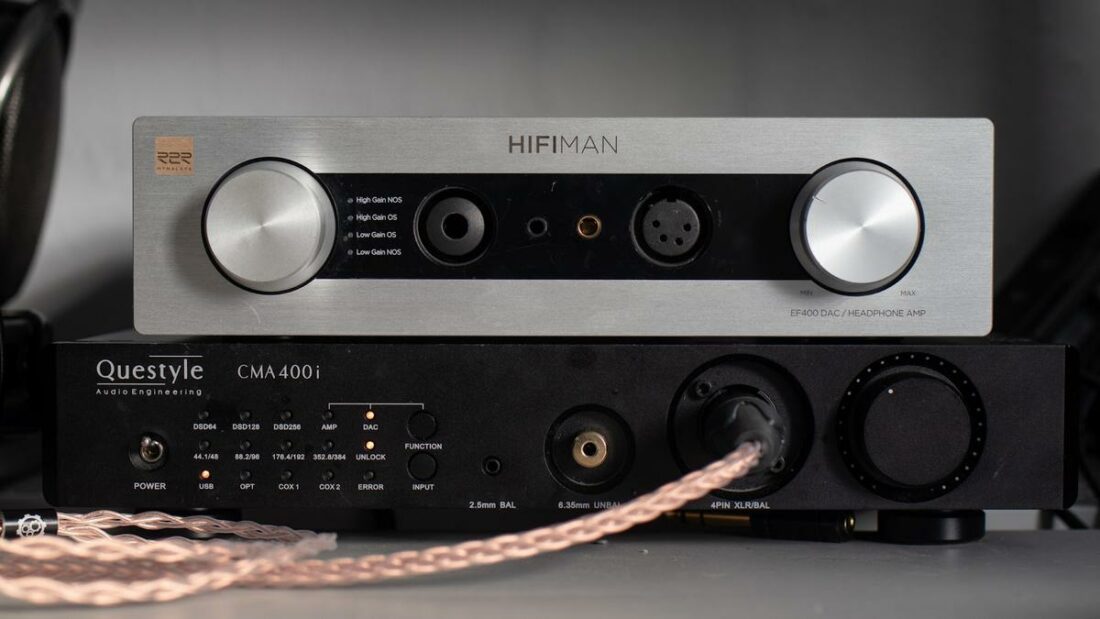
The line-out can be switched between fixed and variable on the CMA-400i, unlike the HiFiMan offering. The volume wheel has more traction as well, though it exhibits slight channel imbalance until rotated a few clicks up.
In terms of sound, the CMA-400i has a more reference sound, with none of the frequencies having any particular emphasis. The output impedance is very low (around 0.1 ohms), resulting in an unaltered frequency response irrespective of the driver impedance.
Another area where the CMA-400i performs better is imaging and staging. Instrument placement can be easily picked up in busy tracks, something the EF400 can struggle with. On the other hand, the EF400 offers a more pleasing tonality with high impedance loads, and the NOS mode can be beneficial for certain “dark” sounding headphones with rolled-off upper-treble.
The EF400 also has noticeably higher output power, and the gain is easy to switch, unlike the CMA-400i, which requires accessing the bottom of the case to change the gain level.
Overall, I prefer the CMA-400i due to its natural and reference-class sound, whereas the EF400 is more of a “guilty pleasure” where the pairing with particular headphones is more pleasing than with the CMA-400i.
Where to Buy
Conclusion
The EF400 has unique attributes that are hard to find in a single package. The high output power coupled with the R2R DAC is a rarity. The various sound profiles can also be an added selling point if you own multiple headphones and want to experiment with different pairings.
However, I feel it needs more refinement as the unrefined upper-treble, alongside the less-than-stellar imaging and staging performance, holds the unit back. The tonal coloration is nice and all, but it helps to have something reference-sounding alongside it.
Moreover, the lack of DSD support can be a dealbreaker for some buyers, while the high output power works against the flexibility of pairing the device with sensitive IEMs.
The EF400 can be a fun addition to your existing source collection. I just don’t think that it can be the only source you’ll ever need.
